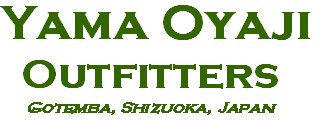I was recently asked the difference between Ma-Jika and Nihon-Jika. I hope I can clear up the subject. Here goes:
The difference between Ma-Jika and Nihon-Jika, as I understand it from my research is:
Ma-Jika ( literally "original" + "Deer") is the species of deer that populated most of Japan, particularly the main island of Honshu, since ancient times. It was virtually hunted to extinction like most deer species of North America. This species has recovered and it now thriving.
Nihon-Jika ( literally "Japanese" + "Deer") was created when the government feared extinction of the Ma-Jika due to market hunting. Their response was to import deer from Hokkaido and Russia (all of these share a common ancestor, the Ma-Jika) and set them free. These animals thrived in Honshu and became the most prevalent species. For the last 100+ years, these have been the most abundant species and most commonly used as the image of Japanese deer. It is common, in my area, to see both Ma-Jika and Nihon-Jika in the same areas, sometimes in the same groups.
All Japanese deer share a common name of "Shika" or "Deer" in combination with an additional word to distinguish the actual species. Another example is Ezo-Jika (Ezo/Yezo Deer from Hokkaido). They are all called Sika in English, which is probably a bastardization of the Japanese "Shika" which is sometimes Romanized as Sika vice Shika.
The taxonomy of these animals varies depending on the source but the most common convention I can find is that they are all:
Kingdom: Animalia
Phylum: Chordata
Sub-Phylum: Vertebrata
Class: Mammalia
Order: Artiodactyla (even toed ungulates)
Family: Bovidae
Sub-Family: Cervidae
Genus: Cervis Nippon
Species include: Nippon-Jika are Cervus Nippon-nippon, and Ma-Jika are Cervus Nippon-centralis. Very slight differences. Ezo-Jika are Cervus Nippon-yesoensis. There also several other species/sub-species in Japan and more throughout the Pacific. These include: Cervus Nippon keramae, Cervus Nippon yakushimae, Cervus Nippon pulchellus, in fact there upwards of 16 different variations, depending on the source of the taxonomy research.
All of these species make for excellent table fare, particularly when fol owing standard wisdom in animal selection, harvest methods, butchering technique, and cooking style. Stop by and we would be glad to grill some up for you!
As for size, coloration, habits, and such, the are basically the same. The only difference is the size of the antlers. Both, when full grown, and perfectly formed, are 3 basic points with a 4th brow tine on each side. Ma-jika max out about 35cm, while Nihon-Jika can be as tall as 75cm. Ezo-Jika can exceed 95cm, but are never like the Sika that have been exported and now thrive in New Zealand and other exotic preserves, as these are often inbred with mutated antlers. They still make awesome trophies but I still prefer a finely balanced "All Japanese" Deer!
I hope this helps!
See you in the Yama!
SK-1 OUT!
I hope this helps!
03 December 2008
Subscribe to:
Post Comments (Atom)



















1 comment:
that is fantastic, you are the true woods man - hunter
Post a Comment